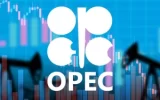Interpreting the OPEC+ nightmare in the Iran-US nuclear symphony

Energy Press reports that indirect talks between Iran and the United States to revive the JCPOA or conclude a new agreement in April 2025 have reached a critical juncture. Recent talks in Oman have raised glimmers of hope for a deal, but Tehran has stressed that the success of the talks depends on Washington’s “realism.” However, the talks still look fragile. For investors, the outcome of these talks will have profound implications for global oil markets, regional geopolitics and economic stability. The implications of these talks for the energy sector, the sanctions regime and the macroeconomic environment are examined below.
Sanctions, Oil and the Costs of Compromise
The main focus of the talks is Iran’s demand for a comprehensive lifting of sanctions in exchange for reducing or dismantling its nuclear program. US sanctions, especially those tightened under the new Trump administration, have limited Iranian oil exports to around 300,000 barrels per day, mainly to China. Revival of the deal could lift those restrictions and allow about 1 million barrels per day of Iranian crude to flow onto global markets.
The influx of this volume into a market already oversupplied could push prices below $70 a barrel, a level that would threaten the economies of OPEC+ oil-dependent countries. For example, the minimum price Saudi Arabia needs to balance its budget is $78.90, while Iraq needs $77.80. The price plunge could force OPEC+ to reconsider its production cuts and send shockwaves through energy stocks such as ExxonMobil and Chevron.
OPEC+’s bottleneck
The influx of 1 million barrels per day of Iranian oil would complicate OPEC+’s strategy. The alliance, which has been gradually unwinding its production cuts since 2023, faces a difficult dilemma: Either absorb Iranian oil to prevent a supply glut, or let prices fall. Gulf states such as the UAE and Saudi Arabia, which are struggling with US trade tariffs on their exports, could demand further production cuts to stabilize prices. Meanwhile, Russia and China, both of whom support the new Tehran-Washington deal, could use the opportunity to weaken OPEC+’s influence.
Geopolitical risks
A breakdown in talks would also pose serious risks. Escalating tensions could disrupt the Strait of Hormuz, a vital route for 20 percent of the world’s oil. Even a temporary closure of the strait would push oil prices above $100 a barrel, a situation that would benefit energy producers but hurt consumer economies. Investors in shipping companies like Maersk or oil hedge funds like USO may benefit in the short term, but long-term volatility will derail global markets.
Investing in Turmoil
Scenario 1: A deal is reached
The winners in this scenario are oil consumers (such as airlines and producers), Asian markets, and buyers of Iranian crude; but OPEC+ exporters, U.S. shale producers (such as Pioneer Natural Resources) and hedge funds tied to West Texas Intermediate crude will suffer.
Scenario 2: Negotiations fail
Safe-haven assets like gold, defense stocks (such as Raytheon Technologies), and energy stocks will rally if prices rise due to geopolitical tensions; But emerging markets, OPEC+ currencies (such as the Saudi riyal and the UAE dirham), and global stocks linked to oil debt will be the losers in this scenario.
Tags:opec
- Comments sent by you will be published after approval by site administrators.
- Comments that contain slander will not be published.
- Comments that are not in Persian or not related to the news will not be published.

Comments
Total comments : 0 Awaiting review : 0 Date: 0